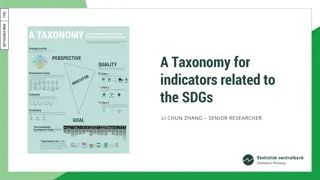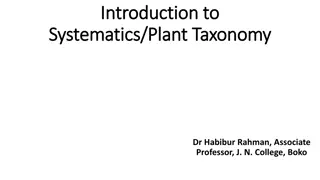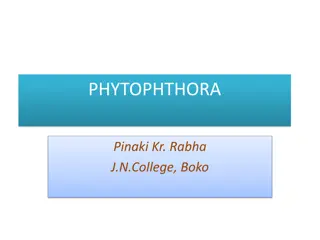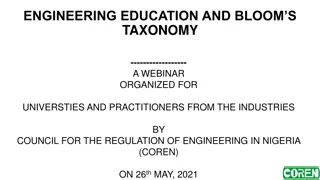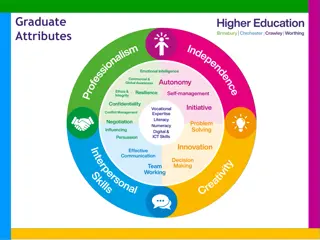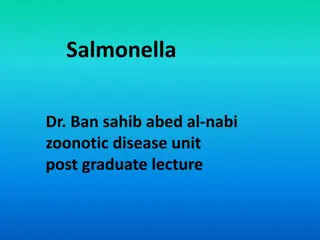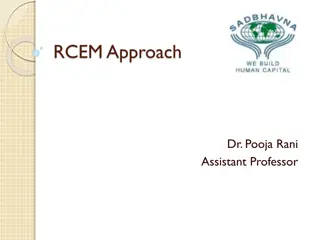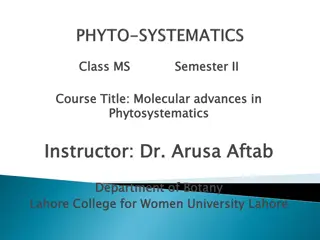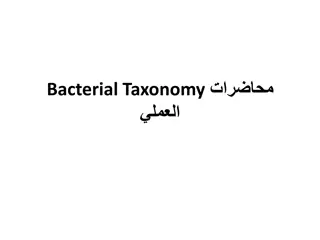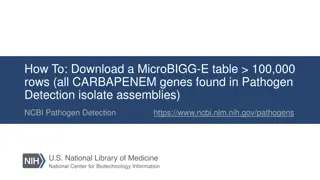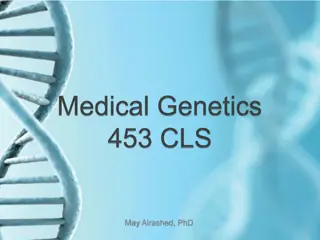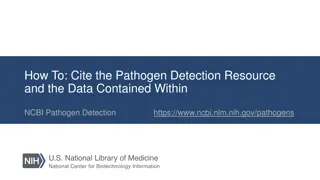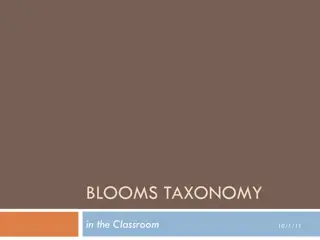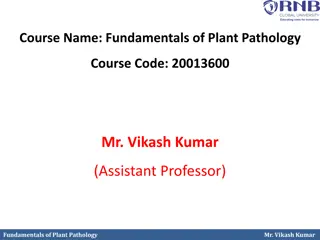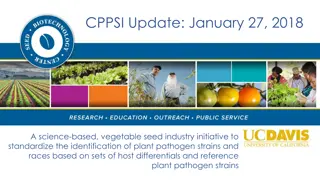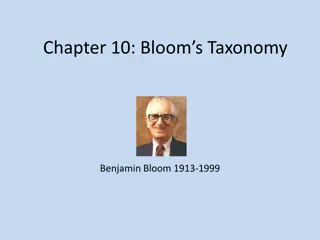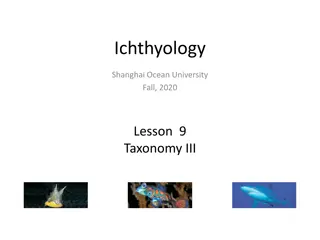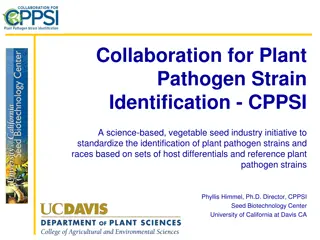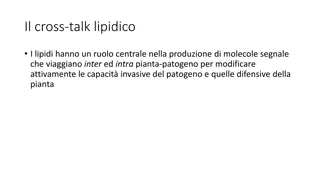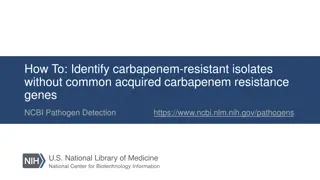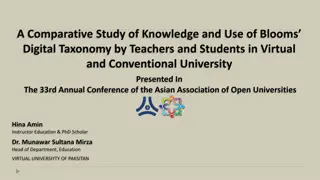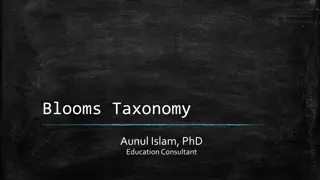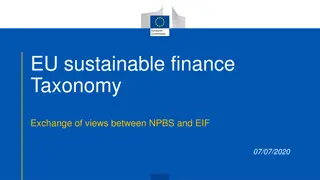Pathogen-reduced platelets: clinical highlights
Pathogen-reduced platelets play a crucial role in reducing the risk of transfusion-transmitted infections through pathogen inactivation technology (PIT). This technology provides an additional layer of safety against various pathogens including viruses, bacteria, protozoa, and leukocytes. Platelet c
2 views • 17 slides
EU Taxonomy and Green Asset Ratio Update
Delve into the latest updates on EU Taxonomy and Green Asset Ratio, legislation, reporting obligations for large companies, and key performance indicators for reporting under EU Taxonomy. Explore how the European Commission's Action Plan on Sustainable Finance and the EU Green Deal are shaping ESG r
180 views • 18 slides
Transparency in Financial Markets: EU Taxonomy, SFDR, and Sustainability Reports Overview
This content discusses the importance of transparency in financial markets through the interplay of EU Taxonomy Regulation, SFDR, and sustainability reports. It emphasizes the objective of enforcing sustainability information to enhance investor decision-making processes and market confidence. The E
11 views • 10 slides
A Scientific Approach to Pandemic Preparedness
Barney S. Graham, MD, PhD, outlines a scientific framework for epidemic and pandemic research preparedness to achieve fast and equitable access to high-quality vaccines for future pandemics. The discussion covers new human viral pathogens, 21st-century viral threats, viral taxonomy, and a prototype
0 views • 16 slides
Update on Pathogen Reduction of Platelets at National Haemovigilance Conference 2023
This update covers the latest developments in pathogen reduction of platelets, including the introduction of whole blood containing platelets. Key strategic initiatives focus on assessing post-collection blood product manipulation processes and developing new products to meet healthcare needs. The a
0 views • 25 slides
Taxonomies in Sustainable Development
Explore the significance of taxonomies in relation to indicators for sustainable development goals (SDGs) and the EU Taxonomy for sustainable activities. Learn how indicators are defined, their role in evaluating economic and environmental activities, and the importance of a standardized taxonomy fo
13 views • 47 slides
Building Academic Success Through Cornell Notes & Memory Techniques
Explore the power of Cornell note-taking method and memory building in academic success. Learn about Bloom's Taxonomy, storing data, representing memory, and more in CSE 390B. Discover how to apply higher-order thinking skills in your academic responsibilities as a student. Dive into the practical a
1 views • 37 slides
Insights into Plant Taxonomy and Systematics by Dr. Habibur Rahman
This informative content delves into the aims and principles of plant taxonomy and systematics as elucidated by Dr. Habibur Rahman. It covers the significance of taxonomy in identification, classification based on natural affinities, inventory creation, evolution detection, and its integral role in
2 views • 34 slides
Phytophthora: Destructive Plant Pathogen
Phytophthora is a destructive plant pathogen that infects various crops, causing symptoms like leaf lesions and rotting tubers. Its somatic structure includes profusely branched hyphae, and it reproduces asexually through zoospores. The germination process involves the spread of spores by wind and w
1 views • 21 slides
Enhancing Engineering Education with Bloom's Taxonomy: A COREN Webinar Overview
Explore the application of Bloom's Taxonomy in engineering education, focusing on understanding, analyzing, and improving the curriculum for Nigerian universities. Learn how this framework promotes critical thinking and guides assessment practices to elevate educational outcomes.
0 views • 40 slides
Bloom's Taxonomy and Educational Objectives
Explore the comprehensive concept of Bloom's Taxonomy and Educational Objectives developed by Prof. Benjamin S. Bloom and his associates. Learn about the cognitive, affective, and psychomotor domains, instructional objectives, and the interrelation of educational activities in shaping learners. Disc
1 views • 35 slides
Outcome-Based Education System and Bloom's Taxonomy in Engineering Education
Dr. Muhammad Mohsin Aman discusses a new system of accreditation focusing on Outcome-Based Education (OBE) in engineering education. The presentation covers Bloom's Taxonomy, OBE accreditation advantages, Washington Accord, engineering attributes, PEC and NED roles, educational objectives, learning
1 views • 61 slides
Overview of Bentham and Hooker's Classification System in Plant Taxonomy
Bentham and Hooker's system of classification in plant taxonomy, outlined in Genera Plantarum, provided detailed descriptions of families and genera based on original plant dissections. This classification system has practical value for plant identification, with keys for taxa and subdivisions for l
4 views • 47 slides
Corporate Sustainable Reporting and EU Taxonomy: A Compass for Europe's Recovery
This event held on September 14, 2021, explored the practical implications of corporate sustainable reporting and the EU Taxonomy for Europe's recovery. Key discussions included the European Sustainability Reporting Standards, moving from preparation to the elaboration phase, and the role of various
1 views • 16 slides
Overview of Platform on Sustainable Finance and EU Taxonomy
Platform on Sustainable Finance focuses on six environmental objectives including climate change, circular economy, pollution prevention, and biodiversity protection. It emphasizes science-based, easy-to-use features to contribute sustainably without significant harm. The EU Taxonomy identifies acti
3 views • 14 slides
Revolutionary N-Assay: Transforming Pathogen Detection in Healthcare
Innovative N-Assay developed by Jonathan Faro, MD, PhD, offers a faster, more accurate, and cost-effective solution for detecting bacterial pathogens in healthcare settings. Unlike traditional assays, N-Assay differentiates between viable and non-viable pathogens, provides information on antibiotic
1 views • 15 slides
Fundamentals of Taxonomy Explained: From Classification to Nomenclature
Taxonomy, derived from Greek roots, encompasses the science of classifying organisms and understanding their variations, evolutionary relationships, and naming conventions. It involves description, identification, classification, and nomenclature of both living and extinct organisms. The practices o
3 views • 39 slides
Graduate Attributes and Essay Writing Structures
Explore the concepts of graduate attributes, essay writing structures, and SOLO taxonomy in education. Understand the levels of understanding using SOLO Taxonomy and learn about the PESEL methodology for effective essay writing. Discover ways to introduce academic essays and the importance of defini
0 views • 30 slides
Salmonella: A Zoonotic Pathogen
Salmonella, a genus of bacteria, includes species causing various diseases in humans, cattle, sheep, goats, and poultry. The pathogen can be transmitted through contaminated food and is classified into typhoidal and nontyphoidal serovars. Nontyphoidal serovars are common and typically lead to self-l
0 views • 20 slides
Comprehensive Overview of RCEM Approach by Dr. Pooja Rani, Assistant Professor
Regional College of Education, Mysore (RCEM) introduces the RCEM Approach focusing on mental abilities over behavior, with its own taxonomy. Modifications to Blooms Taxonomy are discussed, emphasizing creativity. The approach outlines mental processes related to cognitive development objectives, hig
0 views • 7 slides
Molecular Advances in Phytosystematics Course Overview
Phytosystematics is a science focusing on plant taxonomy and classification, aiming to establish evolutionary relationships among plant species. Scientists use genetic analysis and physical characteristics to group plants into related taxa. Functional evolution, parallelism, and rapid divergence inf
0 views • 14 slides
Bacterial Taxonomy and Staining Techniques
Bacterial taxonomy involves classifying and identifying bacteria, while staining techniques such as Gram staining help differentiate between Gram-positive and Gram-negative bacteria. This article discusses the importance of distinguishing bacterial strains, preparing smears, and performing different
0 views • 17 slides
How to Download a MicroBIGG-E Table with >100,000 Rows from NCBI Pathogen Detection
Learn how to download a MicroBIGG-E table containing all CARBAPENEM genes found in Pathogen Detection isolate assemblies on NCBI. Follow a step-by-step guide to select, filter, and download subsets of data in batches to get the complete dataset.
0 views • 10 slides
Evolutionary Contributions of Prominent Scientists in the 19th Century
Charles Darwin, Gregor Mendel, Friedrich Miescher, Aristotle, and Carl Linnaeus were key figures in the 19th century who made significant contributions to the fields of evolution, genetics, DNA discovery, and taxonomy. Darwin proposed the theory of evolution and natural selection, Mendel established
0 views • 20 slides
Synchronization in Distributed Systems: Examples and Taxonomy
Understanding the need for synchronization in distributed systems is vital for ensuring correct operation. Examples such as vehicle tracking and file writing highlight the importance of entities coordinating and agreeing on events and resource access. A broad taxonomy of synchronization reasons is d
2 views • 31 slides
How to Cite NCBI Pathogen Detection Resource
Learn how to correctly cite the Pathogen Detection Resource and data within NCBI Pathogen Detection. Follow guidelines on citing the entire resource, subsets of data, accessing Isolates Browser & MicroBIGG-E, using NCBI AMR resources, and acknowledging data submitters in your manuscript.
0 views • 8 slides
Blooms Taxonomy in Educational Settings
In the classroom, understanding Bloom's Taxonomy is essential for effective teaching and learning. This taxonomy, created by Benjamin Bloom, categorizes levels of thinking skills from basic memorization to higher-order critical thinking. The revised Bloom's Taxonomy emphasizes the importance of prog
0 views • 24 slides
Plant Pathology: Reproduction and Classification of Bacteria
This course on Fundamentals of Plant Pathology, led by Mr. Vikash Kumar, covers essential topics such as disease identification, pathogen nature, disease management strategies, pathogen classification, and plant disease diagnosis. It delves into the reproduction and classification of plant pathogeni
0 views • 16 slides
Standardizing Identification of Plant Pathogen Strains in Vegetable Seed Industry
Focused on standardizing plant pathogen strain identification, the CPPSI initiative by UC Davis works towards enhancing the industry's capabilities. Through reference materials and strategic collaborations, CPPSI aims to streamline disease management processes and promote sustainability. The project
0 views • 8 slides
Bloom's Taxonomy: A Guide to Cognitive Levels
Blooms Taxonomy, developed by Benjamin Bloom, categorizes thinking into six cognitive levels, from remembering to creating. The original taxonomy includes knowledge, comprehension, and application as lower levels, and analysis, synthesis, and evaluation as higher levels. In the revised version, the
0 views • 10 slides
A Fascinating Dive into the World of Fish Taxonomy - Ichthyology Lesson Highlights
Explore the intriguing world of fish taxonomy through a captivating Ichthyology lesson at Shanghai Ocean University in Fall 2020. Delve into the diverse families such as Percidae, Xiphiidae, Scombridae, Pleuronectidae, and Tetraodontidae, discovering unique features and characteristics of fish speci
0 views • 19 slides
Collaboration for Plant Pathogen Strain Identification - CPPSI Initiative Overview
CPPSI, a science-based initiative in the vegetable seed industry, aims to standardize plant pathogen strain identification using host differentials and reference strains. The goals include developing differential host sets, enhancing awareness, and facilitating material distribution. Criteria for ex
0 views • 12 slides
Field Visits and Herbarium Techniques in Plant Taxonomy
This material covers the field visits and specimen collection process in plant taxonomy, emphasizing the need for complete specimens with tools required. It explains the pressing, drying, mounting, and preservation techniques involved in creating herbarium specimens for study and research purposes.
0 views • 19 slides
Automated Knowledge Base Construction: Taxonomy Induction and Entity Disambiguation Overview
Explore the foundations of automated knowledge base construction through taxonomy induction and entity disambiguation frameworks. Learn about organizing and distinguishing entity types, the significance of structuring entities like physicists, villages, and chemical formulas. Delve into the inputs,
1 views • 53 slides
Role of Lipids in Plant-Pathogen Interaction
Lipids play a central role in signal molecule production for actively modifying the invasive capabilities of pathogens and the defensive mechanisms of plants during inter and intra-plant-pathogen interactions. They are essential constituents of membranes, providing structural support and serving div
0 views • 43 slides
Comprehensive Guide to Identifying Carbapenem-Resistant Isolates Without Common Acquired Carbapenem Resistance Genes
Utilize the Isolates Browser on NCBI Pathogen Detection platform to search for carbapenem-resistant isolates without common acquired resistance genes. Follow steps such as using AST phenotypes and AMR genotypes, cross-browser selection, and filters to isolate relevant results. Detailed instructions
0 views • 6 slides
A Comparative Study of Blooms Digital Taxonomy in Virtual and Conventional Universities
This study presented at the 33rd Annual Conference of the Asian Association of Open Universities focuses on the comparison of knowledge and use of Blooms Digital Taxonomy by teachers and students in virtual and conventional universities. It explores the impact of integrating digital tools in educati
0 views • 24 slides
Bloom's Taxonomy of Learning Domains
Bloom's Taxonomy, developed in 1956, focuses on promoting higher-order thinking in education. It categorizes learning into three domains: Cognitive (knowledge), Psychomotor (manual skills), and Affective (attitude). While Bloom's committee initially omitted the Psychomotor domain due to teaching lim
0 views • 19 slides
Enhancing Classroom Questioning Using Bloom's Taxonomy
Bloom's Taxonomy, developed by Benjamin Bloom in 1956, offers a framework for educators to set educational goals and assess students' understanding. This taxonomy consists of different levels - Remember, Understand, and Apply - guiding teachers to ask questions that promote critical thinking and dee
0 views • 11 slides
EU Sustainable Finance Taxonomy Overview and Regulations
The EU Sustainable Finance Taxonomy is not a mandatory list for investment but a tool to aid informed decisions. It focuses on environmentally sustainable economic activities, with a technology-neutral approach. The taxonomy aims to facilitate the transition of polluting sectors, promote transparenc
0 views • 22 slides





